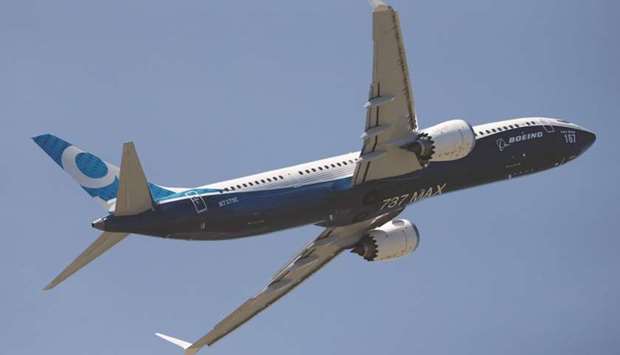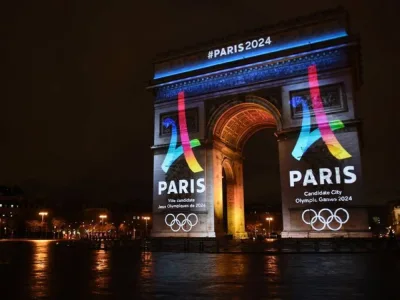Boeing unveiled a new version of its best-selling 737 aircraft yesterday, injecting life into a faltering civil aviation market as French President Emmanuel Macron flew in to open the world’s biggest airshow in Paris.
After years of booming orders driven by increased air travel and more fuel-efficient planes, passenger jet manufacturers are bracing for a slowdown in demand while they focus on meeting tight delivery schedules and ambitious production targets.
In a sign of their more modest expectations, some companies have cut back on staffing and catering at this year’s Paris Airshow and made less space available for the media.
But Boeing generated a burst of activity on the opening day by launching the 737 MAX 10 to plug a gap in its portfolio at the top end of the market for single-aisle jets, following runaway sales of the rival Airbus A321neo.
The US planemaker said it had more than 240 orders and commitments from at least 10 customers for the new 737, which can carry up to 230 people in a single-class configuration.
“Many airports are running out of capacity and for those airports this is a perfect aircraft,” said Ajay Singh, the chairman of low-cost Indian airline SpiceJet, as his company signed a provisional deal to buy 40 MAX 10s.
However, Airbus immediately hit back with an order for 100 of its popular A320neo planes from leasing firm GECAS, as well as a deal for 12 A321neos with Air Lease Corp.
Airbus sales chief John Leahy brushed off the latest Boeing challenge saying much of the interest in the MAX 10 was from existing Boeing customers switching orders from other models.
“We think the 737 MAX 10 is a competitor to the (MAX) 9 and that’s why a lot of people are converting,” he said.
Twenty of SpiceJet’s provisional order for 40 MAX 10s were conversions from an existing order for other 737 models. Industry sources also said Airbus would soon announce an order for 10 of its A350-900 wide-body jets, while sources said on Sunday it was close to clinching a deal worth about $5bn with low-cost carrier Viva Air Peru. Providing more reassurance for planemakers, Qatar Airways said it was sticking with plans to increase its fleet and routes, despite a diplomatic rift with four Arab nations which have closed their airspace to the company.
While demand for passenger jets may be ebbing, there are signs interest in military aircraft is picking up after years in the doldrums due to government budget cuts and weak growth.
Lockheed Martin is in the final stages of negotiating a $37bn-plus deal to sell 440 F-35 fighter jets to a group of 11 nations including the United States, two people familiar with the matter told Reuters.
That would be the biggest deal yet for the stealth warplane, set to make its Paris Airshow debut this week.
In another boost for defence projects, President Macron flew into the airshow aboard an Airbus A400M military transporter in his first official engagement since winning a parliamentary majority in elections on Sunday.
His arrival was followed by a flypast by the world’s largest passenger plane, the Airbus A380, and France’s aerial display team.
The ceremony lent high-level support to two ambitious European aerospace projects tarnished by problems: the A400M because of chronic cost overruns and delays and the A380 because of weak sales that threaten its future. Airbus said on Sunday it was working on an upgrade of the A380 – called A380plus – with fuel-saving wingtips, confirming plans reported by Reuters in March. Airbus chief Fabrice Bregier said yesterday the company was in talks with several potential customers for the upgraded plane.
But it would only be put into production if it received “a large order”, he said, without elaborating.
Four-engined, double-decker superjumbos such as the A380 and Boeing’s 747 were once viewed as the future of air travel between international hubs, but interest has waned as airlines have preferred cheaper, more nimble aircraft.

A Boeing 737 Max takes part in a flying display at the first day of the 52nd Paris Air Show at Le Bourget airport near Paris.


